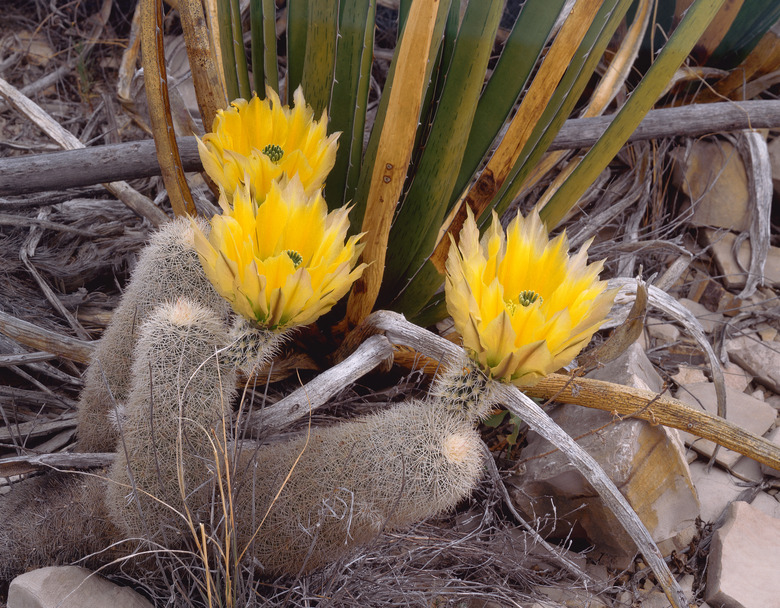Rainbow Cactus Care Instructions
We may receive a commission on purchases made from links.
For a cactus that's colorful out-of-bloom as well as in-bloom, grow rainbow cactus (Echinocereus rigidissimus or Echinocereus pectinatus var. rubrispinus). The short, cylindrical stem is densely covered with comb-shaped spines in alternating bands of red, pink, white and gray. In spring, bright magenta flowers at least 2 inches wide appear. Slow-growing plants rarely branch, so rainbow cactus is grown from seed. It is suited for container growing because of its need for excellent drainage.
Preferred Light Conditions
Preferred Light Conditions
For best spine color and stem shape, grow rainbow cactus in the sun. In areas with hot summer temperatures and intense sun, partial shade in the afternoon is acceptable. The cactus is native to the southwestern United States and northern Mexico, growing in mountainous areas between 4,000 and 6,000 feet elevation. Plants are subject to hot, dry summers and increased levels of ultraviolet light because of the higher elevation, so you can grow them where more tender plants would fail.
Rainbow Cactus Cold Hardiness
Rainbow Cactus Cold Hardiness
One of the cold-hardier cacti, rainbow cactus tolerates short exposures to temperatures of 10 degrees Fahrenheit if the plant is kept dry, making it reliably hardy in U.S. Department of Agriculture plant hardiness zones 9 through 11. Rainbow cactus is marginally hardy in USDA zones 7 and 8 and can endure brief periods when temperatures dip to minus 20 degrees Fahrenheit when protected with a thick mulch.
If you grow rainbow cactus in a container, it will not be as cold hardy as if it is in the ground. For colder winter areas, keep the cactus and its soil dry in winter. Make sure to use a container with bottom drainage to prevent possible problems with root rot. If your area is prone to freezing temperatures, you can bring the cactus indoors to a sunny and protected location during winter. Once warm weather returns in spring, you can take the cactus back outdoors.
Preferred Soil Conditions
Preferred Soil Conditions
Grow rainbow cactus in an open, fast-draining soil mix. You can use purchased cactus and succulent potting mix, but mix 1 part perlite with 2 parts of the potting mix to increase the drainage even more. Rainbow cactus reaches 12 inches high — very rarely 18 inches — so the plant is best enjoyed up close in a container where its color and markings are easily visible. Give the cactus a pot just slightly bigger than the diameter of the plant's root ball for good drainage and so soil can dry out quickly between watering.
In USDA zones 9 through 11, plants grow outdoors in well-draining garden beds such as rock gardens and mounded soil areas or raised beds in xeriscape gardens. Don't plant on a soil that has a tendency to remain soggy to prevent problems with rot.
Rainbow Cactus Water Needs
Rainbow Cactus Water Needs
During the growing season, water your cactus thoroughly, and then let the soil dry out before watering it again. It is best to err on the side of underwatering for rainbow cactus, since it is susceptible to root rot if soil is too moist. Test the soil with your fingers or a soil probe halfway down the pot or in the garden bed at 2 inches into the soil. If you find moisture at that level, don't water the plant. Rainbow cactus goes dormant for the winter, so water it less frequently then, withholding water if the plant is in the ground.
